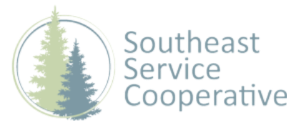Regional STEM Networks
In 2024, the MN STEM Ecosystem established four regional STEM Networks in Minnesota. Over the next year, we will be continuing the STEM asset mapping process and supporting additional STEM networks across the state.
Each of the networks is committed to building place-based strategies to foster collaboration and increased access to STEM learning.
Learn more about our process and purpose below.
Explore Your STEM Network
Defining Our Networks
Inventory of Existing Regional STEM Assets: Conducting an inventory of existing STEM assets within each region is crucial, it provides a comprehensive understanding of the resources, programs, and opportunities already available to students and educators. This knowledge allows stakeholders to leverage existing assets, avoid duplication of efforts, and maximize the impact of new initiatives. Additionally, the inventory helps identify areas of strength and expertise within the region. .
Identifying Gaps in STEM Learning and Designing Targeted Interventions: Identifying gaps in STEM learning is essential for ensuring equitable access to high-quality educational opportunities for all students. By analyzing the inventory of existing assets, stakeholders can identify underserved communities and populations where resources and support are lacking. Once gaps have been identified, stakeholders can design targeted interventions to address specific needs and challenges.
Integrating Cultural and Community STEM Program Providers: Integrating cultural and community STEM program providers is essential for building equity and inclusivity in STEM education. By partnering with organizations that have deep roots in local communities and understand the cultural nuances and needs of diverse populations, stakeholders can ensure that STEM programs are accessible, relevant, and engaging for all students. These partnerships also help build trust and credibility within communities, making it easier to recruit and retain participants from underrepresented backgrounds.






